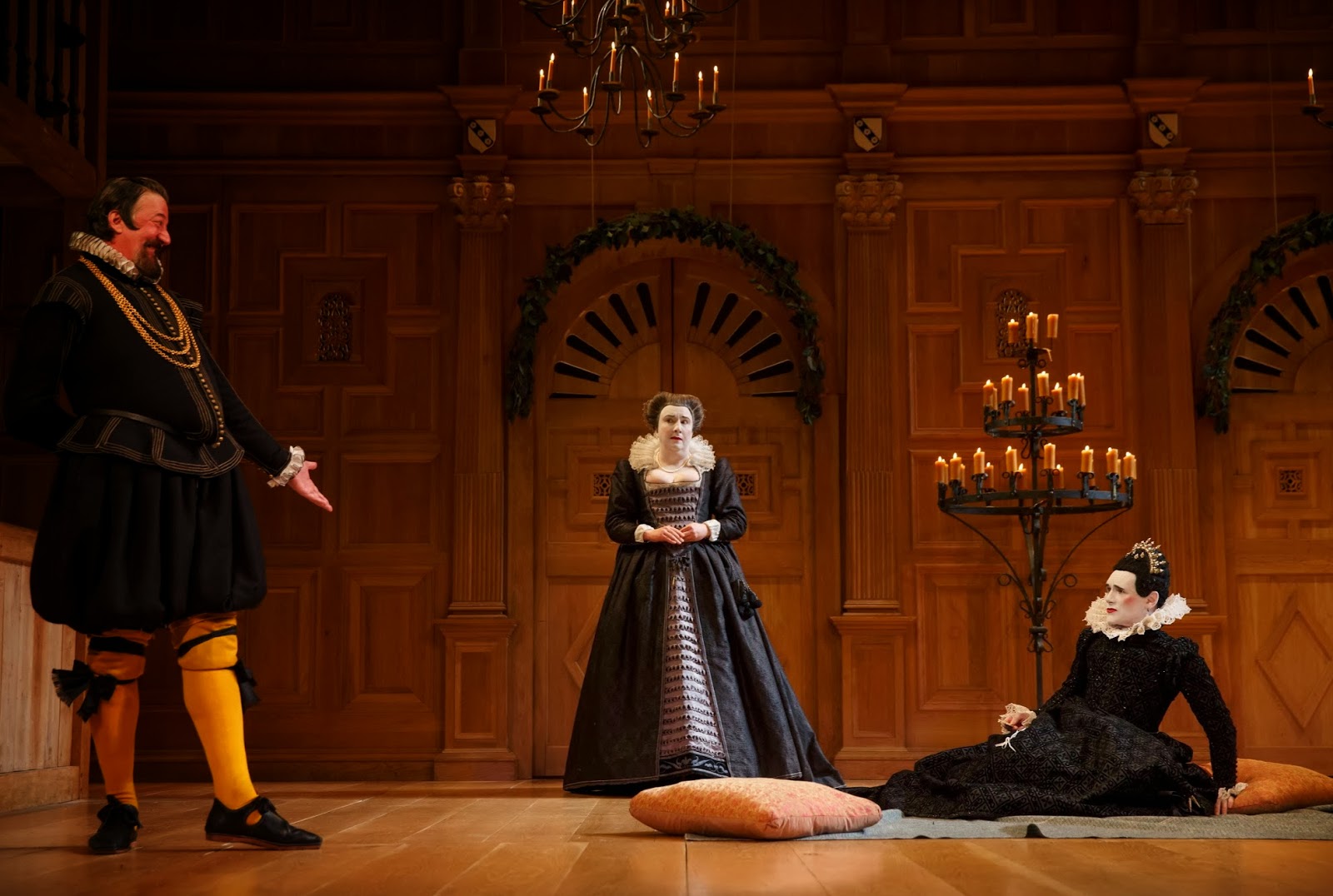Writing
about deBessonet’s Winter’s Tale last
week, I barely touched on Todd Almond’s massive contribution. Their Tale is a musical, less of a departure
than Kiss Me Kate but still a radical
revision. They retain whole scenes of Shakespeare, but they also supplement the
speech with songs in a modern idiom as well as new dialogue. They recast
Almond’s Antigonus as a second chorus, an MC whose post-mortum perspective
(he’s the character who “exits, pursued by a bear” in Act 3) enhances the
play’s melancholy. The device also links the polyphonic tones and styles of the
original play with its musical, comedic, and choreographic additions. It’s the
keystone to this Tale’s success.
I
believe that polyphony is a fundamental element of Shakespeare’s dramaturgy.
Not incidentally, I think it’s also the aspect that’s most often ignored, to
the detriment of mainstream productions (& audiences!). There’s a lot of
Shakespearean theater in NYC these days, but it’s pretty homogenous. The
direction has narrow range of tone, a steady pace, and most importantly, a
conceptual framework to give unity to the production. These approaches fall
into a few conventional categories:
1. Modern Shakespeare: to underscore
Shakespeare’s relevance, the director puts the characters in modern business
attire (for a tragedy or history) or contemporary fashion (comedy, romance)
 |
| Romeo and Juliet David Leveaux, 2013 |
2. Retro Shakespeare: to keep faith with
the plays’ cultural contexts, the production pulls out the doublets and hose
 |
| Twelfth Night Tim Carroll, 2013 |
3. Quantum
Leap Shakespeare: characters get teleported into another period
altogether; Beatrice & Benedick execute their romance like they’re cursed
to replicate their actions no matter where or when they are
 |
| Much Ado About Nothing Jack O'Brien, 2014 |
4. Heavy Metal Shakespeare: rather than pinning
down a drama to a specific era, the staging defines a generic medieval setting
with fur ruffs, leather straps studded with metal, heavy percussion, and high
dudgeon
 |
| Macbeth Jack O'Brien, 2013 |
5. Picturesque Shakespeare: an
expressionistic approach that aims at an artistic effect through visual
spectacle and show-stopping moments; in shows following this method, actors
tend to get absorbed into the backdrop
 |
| A Midsummer Night's Dream Julie Taymor, 2013 |
These
five* approaches work just fine for very casual theatergoers since they present
some variation on what Shakespeare “should” look like. But I know plenty of
folks who have given up on Shak, having no desire to see another J. Caesar with cell phones. I don’t
blame them, & I know I’m nuts for going anyway—undiscerning gluttony is a
hallmark of fandom.
But
beneath the superficial styles, these approaches are even more similar. The
verse is normalized to sound like speech rather than recited as poetry; the
playing is driven by psychological motivation, normal behavior, and bits of
stage business. The stagings steer away from outright artifice, erecting a
fourth wall (except during subtlely formal moments involving clowns). They also
get discomfited by the dramatic devices that don’t fit into a realistic, modern
mold—the devices of bed tricks & rituals of recognition, the ceremonies and
masques of court, the intrusions of fantastical and otherworldly beings. The
dominant format for Shak is literal-minded mimesis, the conventions of American
movies applied to Elizabethan dramaturgy. Sounds awful, doesn’t it?
The
fundamental problem is that Shakespeare’s plays aren’t smooth. They switch
styles within scenes (look at how the gears shift in the first scene of Lear, from casual aristo chit-chat to a
formal court scene) and between scenes (Macbeth’s
famous segue from Duncan’s murder to the Porter’s routine). Nor are they
realistic. That should be obvious, since the characters speak in verse, but it
doesn’t stop directors from trying to pretend the opposite.
So
the moment that an actor opens his mouth to speak (or her, in Macbeth & All’s Well), he’s dispelled the illusion of realism. The tonal and
structural shifts, the formal devices and plot tricks, the outdated codes and obsolete
social structures all fight against its re-establishment. I believe the best
way to blend the polyphony of Shakespeare’s style is to admit its artificiality
and go from there.
-----
photos
R&J, Midsummer: Sara Krulwich
12N, Much Ado: Joan Marcus
Macbeth: T. Charles Erickson

